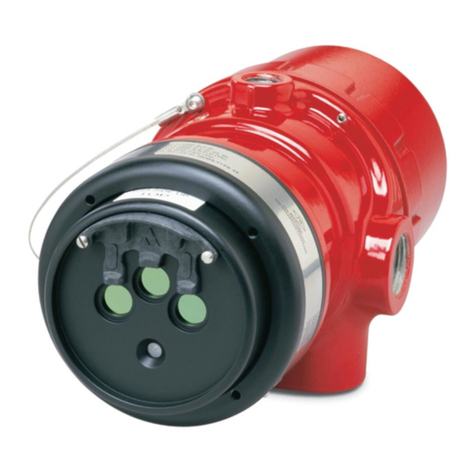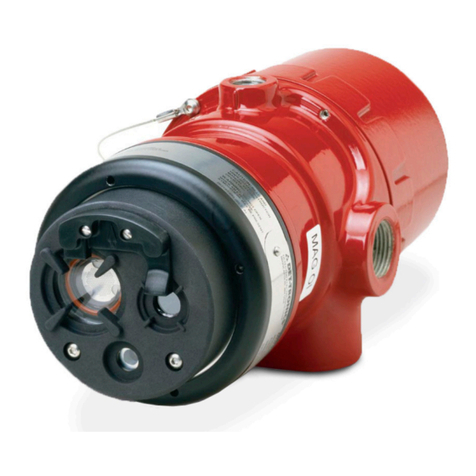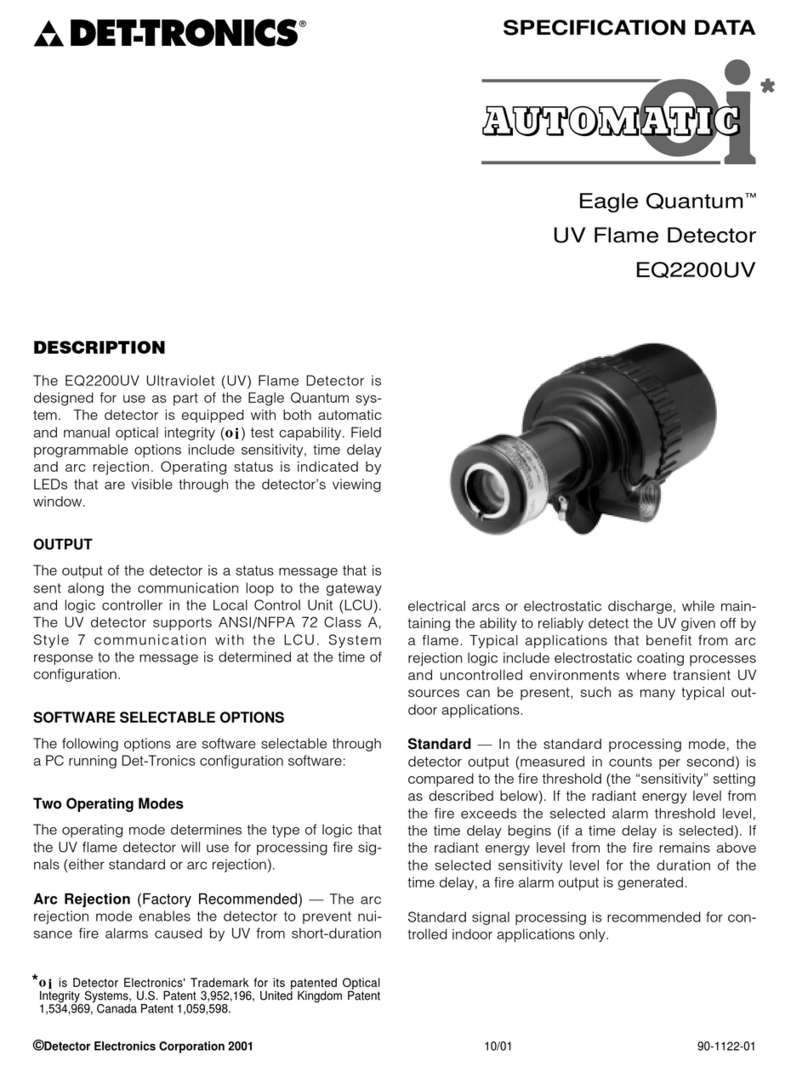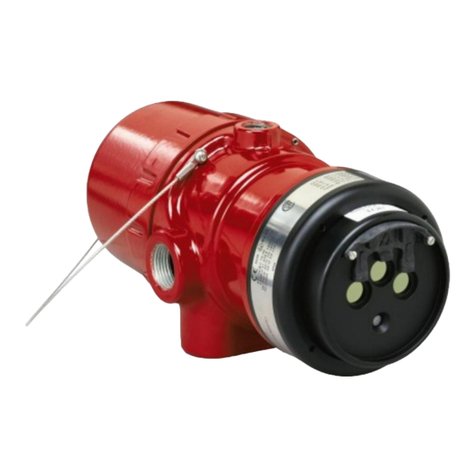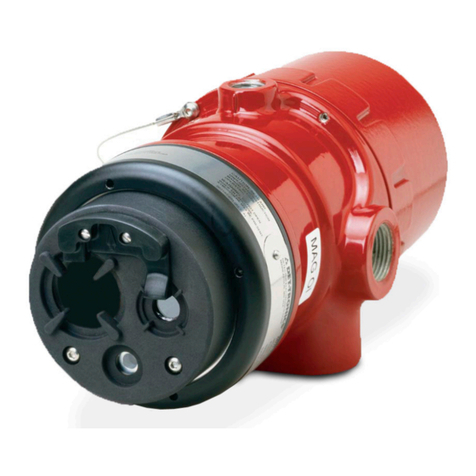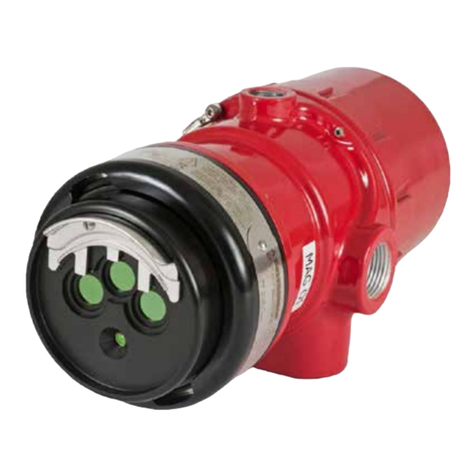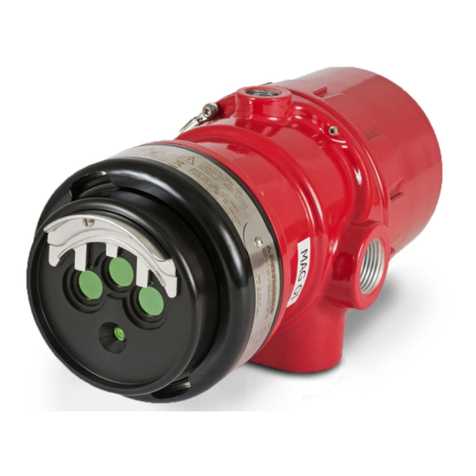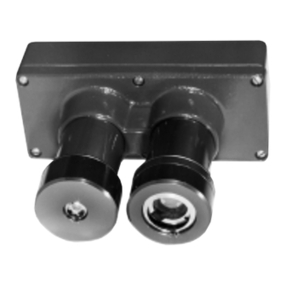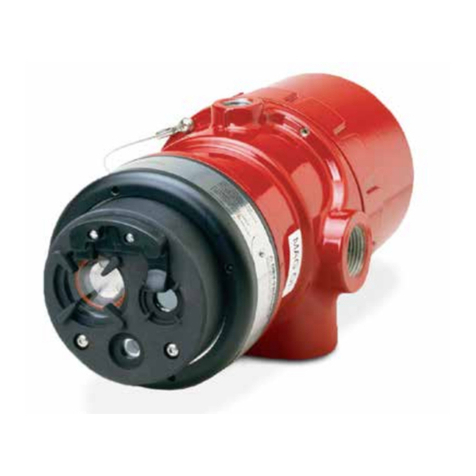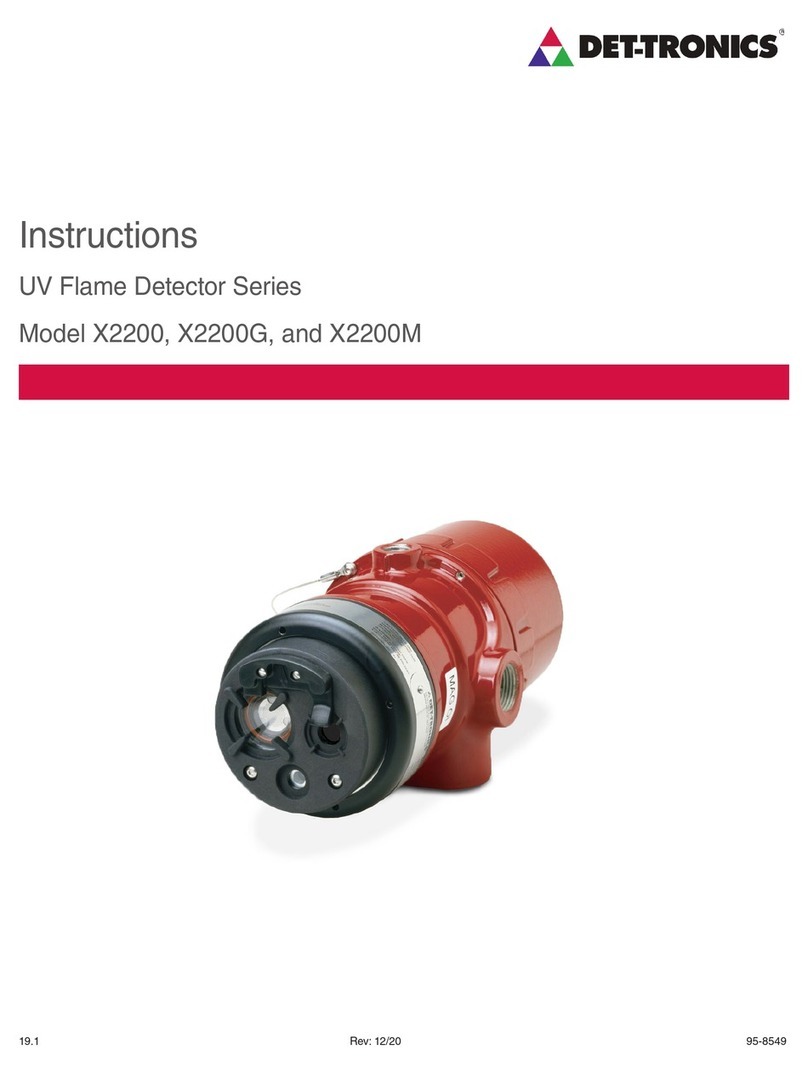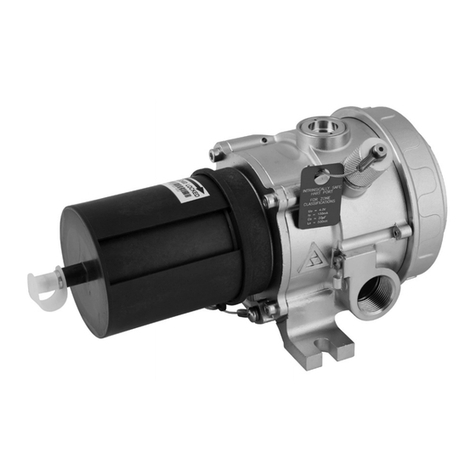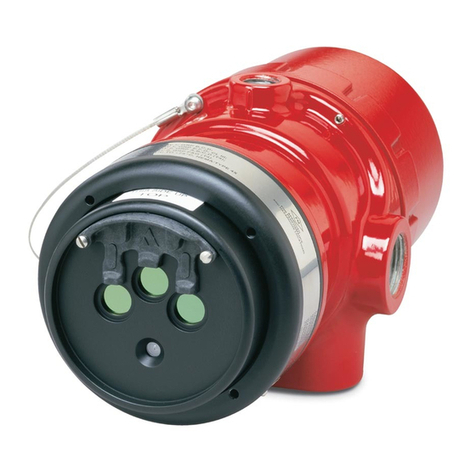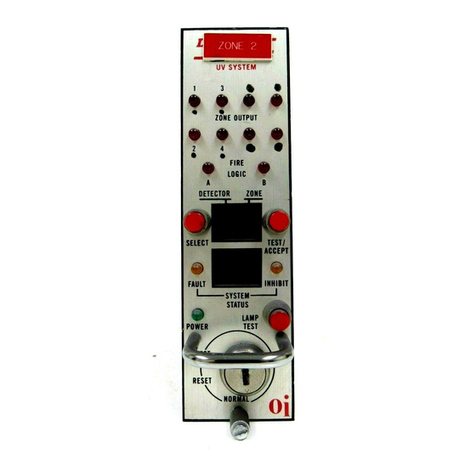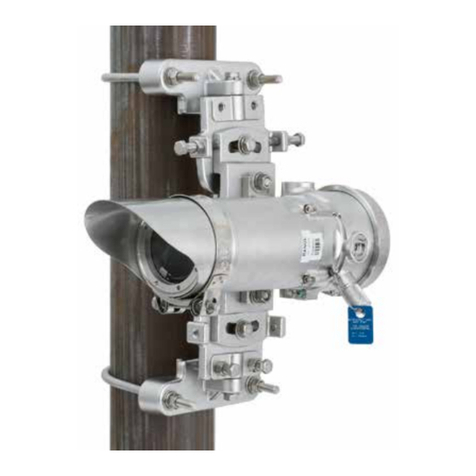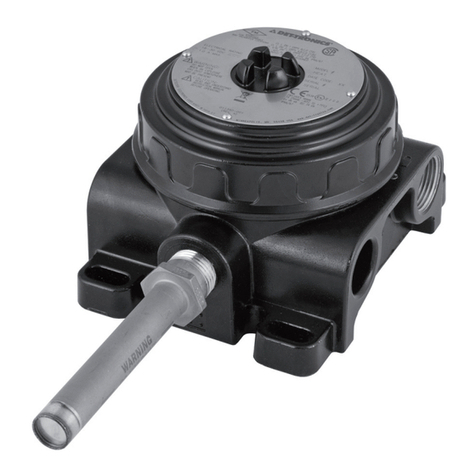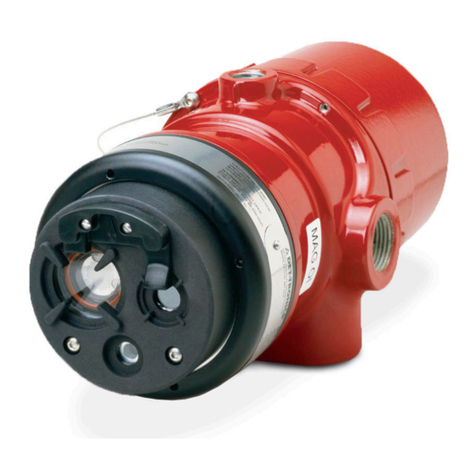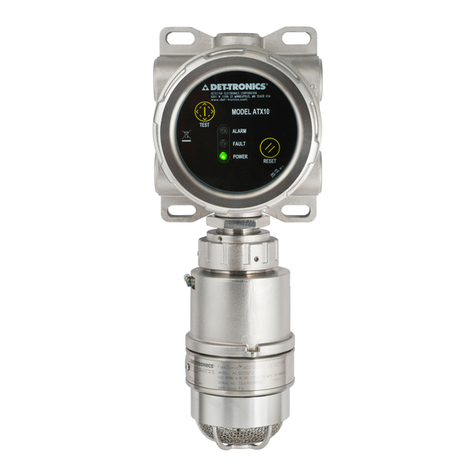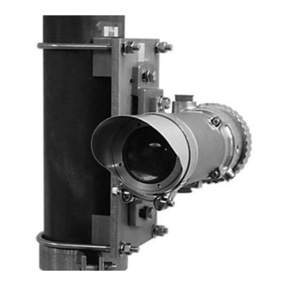
95-876842.1
GENERAL APPLICATION
INFORMATION
RESPONSE CHARACTERISTICS
Response is dependent on the detector's sensitivity
setting, distance, type of fuel, temperature of
the fuel, and time required for the fire to come to
equilibrium. As with all fire tests, results must be
interpreted according to an individual application.
See Appendix A for third-party approved fire test
results. Additional fire test results are available
from Det-Tronics
IMPORTANT APPLICATION
CONSIDERATIONS
In applying any type of sensing device as a fire
detector, it is important to know of any conditions
that can prevent the device from responding to
fire, and also to know what other sources besides
fire can cause the device to respond.
Welding
It is recommended that the system be bypassed
during welding operations in situations where the
possibility of a false alarm cannot be tolerated.Gas
welding mandates system bypass, since the gas
torch is an actual fire. Arc welding rods can contain
organic binder materials in the flux that burn during the
welding operation and are detectable by the X3302.
Welding rods with clay binders do not burn and will
not be detected by the X3302. However, system
bypass is always recommended, since the material
being welded may be contaminated with organic
substances (paint, oil, etc.) that will burn and possibly
cause the X3302 to alarm. Due to the possibility of an
alarm condition, arc welding should not be performed
within 40 feet (12.2 m) of the detector configured to
very high sensitivity, within 35 feet (10.7 m) at high
sensitivity, within 25 feet (7.6) at medium sensitivity and
within 15 feet (4.6 m) at low sensitivity.
Articial Lighting
The X3302 should not be located within 2 feet (0.6
m) of artificial lights. Excess heating of the detector
could occur due to heat radiating from the lights.
EMI/RFI Interference
The X3302 is resistant to interference by EMI
and RFI, and is EMC Directive compliant. It will
not respond to a 5 watt walkie-talkie at distances
greater than 1 foot (0.3 m). Do not operate a
walkie-talkie within 1 foot (0.3 m) of the X3302.
Carbon Containing Fires
The X3302 is a multiple spectrum IR device with
detection limited to flames that produce water vapor
as a by-product of combustion. These include
hydrogen, ammonia, arsine, silane, and light
hydrocarbons such as methane and methanol. Some
lighter carbonaceous fuels may be detectable by the
X3302, but heavier carbon containing substances
that burn with a dark yellow-orange flame and emit
dense sooty smoke may not be sensed with this
device. Other fuels that are not detectable include
sulfur and burning metals. Fuels that contain a
mixture of hydrocarbons and non-hydrocarbons
may be detectable, please consult Det-Tronics for
additional information on this subject.
Sunlight
Infrared based flame detectors that operate in the
H2O emission band can become desensitized by
modulated sunlight under certain conditions. If
the location where the detector is to be installed
may expose the detector to modulated sunlight,
in order to optimize the detectors performance,
Det-Tronics suggests fitting the X3302 with a
Q2033A10R 10 degree FOV sight limiter / weather
shield accessory. As an option, a sun shield may
also be installed. See the Accessories section of
this instruction manual for ordering information.
Background Infrared
Infrared (IR) energy is emitted from fire as well as non-fire
sources. Because non-fire sources may in some cases
emit IR energy in wavelengths that are monitored by the
detector, special detector installation and configuration
considerations need to be given in these situations.
The detector differentiates fire from non-fire sources
by using algorithms that analyze the emission
characteristics of the IR energy that is within its field
of view (FOV). Typically, non-fire IR sources do not
qualify these algorithms. However, if an object or
person moves between the non-fire IR source and
the detector the randomly modulated IR energy that
is produced could mimic a fire signal.
In order to optimize the detector’s false alarm rejection
performance, it is preferred that the detectors FOV
be controlled to the area that requires flame detection
monitoring. Whenever possible, sources of intense
IR emissions should be eliminated from the detector’s
FOV. Although elimination of all background
IR sources may not be possible, controlling the
detectors FOV through careful installation and aiming
will help to optimize the detector’s performance.
